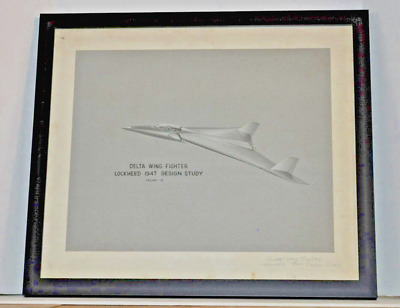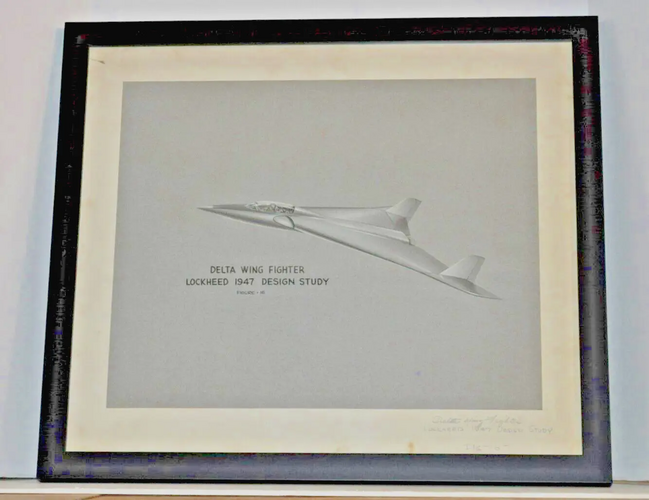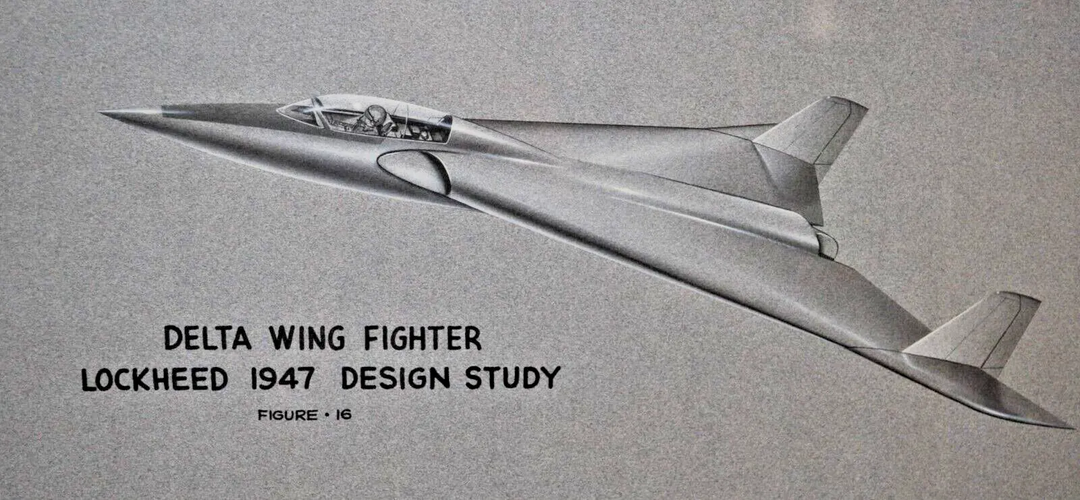The Lockheed Delta Design - A number of years ago, Lockheed undertook intensively the design of a delta-wing airplane, with the results shown in Fig. 15. This airplane actually progressed to the point where pieces of an airplane were being built in the shop. Extensive tunnel tests, however, showed so many aerodynamic problems connected with the type that it was discarded. One of the major problems encountered was the directional instability at high angles of attack. Fig. 16 shows the variation of the directional stability with two different vertical tail configurations. The reversal of directional stability prior to the wing stall was considered to be an extremely dangerous condition.
Use of a double tail was beneficial at some angles of attack but did not correct the situation. Comparison of the delta configuration with a conventional low-aspect-ratio straight-wing airplane shows the effect of wing planform on this problem. The delta-wing airplanes had reverse stability prior to the stall. The straight-wing type got to zero stability considerably above the wing stall. A second major problem encountered was the great loss of lift encountered when the wing wastrimmed for any given angle of attack. Fig. 17 shows the maximum lift obtained both with and without trim on the airplane with the landing gear extended.
Numerous efforts were made to trim the airplane by trailing edge devices, leading edge devices, extendable horizontal surfaces on the nose of the fuselage, and, finally, by wing tip trimmers. By moving the whole outboard wing section beyond the vertical tails to angles of attack as much as -55 deg, suitable trim characteristics could be obtained. Devices on the forward part of the airplane which showed favorable trimming characteristics always ruined the stability. Because of the combination of low aspect ratio and loss of lift due to trim, the lift-drag ratio when gliding at a speed of 40% above the stall was 3.7 to 1. Values for our current airplanes, such as an F-80, at similar glide speed are approximately twice as high (Fig. 18). To get the same type of landing flare characteristics as were available on the F-80, a thrust output equal to normal power on one of the two delta-wing airplane engines was required.
Landing flare rates of descent required very long landing-gear shock-strut travel. The final value chosen for the Lockheed design in order to get reasonable load factors was 25 in. While the basic wing structure started out to be quite light, two factors came into the picture which were very adverse. These were the high suction forces acting over large parts of the wing in pull-up maneuvers at low altitude and the use of numerous stressed cover plates to provide access to equipment in the wing, to make use of space that was available.
When the actual weights were computed for the final design, the delta-wing-type airplane weighed a few hundred pounds more than a competitive design utilizing a normal swept-wing design with a tail. A final evaluation of drag through the transonic range, comparing the Lockheed delta to other wing configurations, led to the discarding of the projected airplane.



